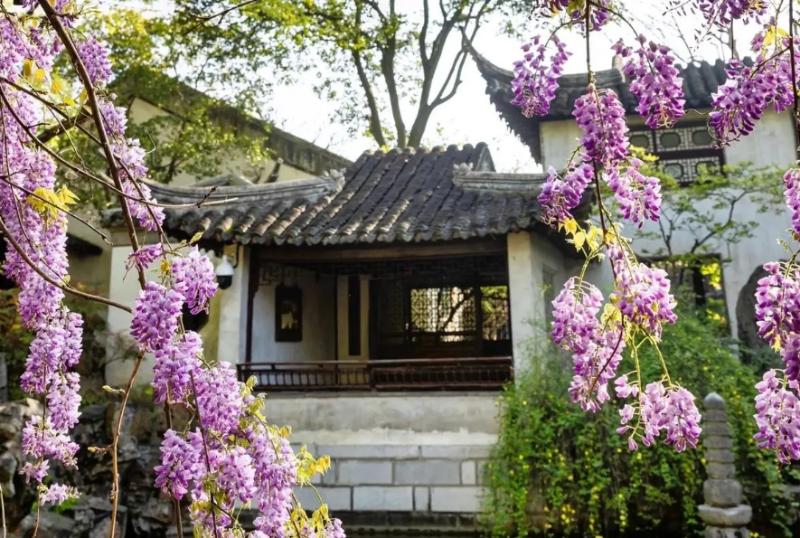The Lingering Garden
1. Historical Background of Lingering Garden
The Lingering Garden, located in Suzhou, Jiangsu Province, China, is one of the four famous classical gardens of China. It boasts a long history and rich cultural heritage. The garden was originally built during the Ming Dynasty in the Wanli period by Xu Taishi, an official of the Ministry of War, and was called the East Garden. During the Kangxi period of the Qing Dynasty, it was purchased and extensively expanded by Gu Wenbin, who named it "Lingering Garden," meaning to "linger on the beautiful scenery." Since its creation, the garden has undergone several renovations, and the current layout primarily reflects the mid to late Qing Dynasty style.
2. Architectural Features
The Lingering Garden is renowned for its unique architectural style, characterized by its intricate layout and diverse architectural forms. The garden features typical elements of the Jiangnan water town style, combining mountains, courtyards, pavilions, and other elements to create a picturesque landscape.
2.1 Traditional Courtyards
The garden's courtyard design emphasizes clear layering, using walls and corridors to divide space, maintaining privacy while enhancing the landscape's depth. The vegetation within the courtyards is meticulously arranged, offering different views in each season.
2.2 Buildings
The Lingering Garden's buildings, mainly halls and pavilions, include notable structures such as the Hanbi Mountain Villa, the Guanyun Tower, and the Liuting Pavilion. Each building showcases the exquisite craftsmanship of traditional Chinese architecture, with elaborately carved beams and columns.
2.3 Corridors and Bridges
The design of corridors and bridges in the Lingering Garden is also ingenious. The most famous is the flower corridor bridge between the Five Peaks Library and Little Penglai, with a winding structure that serves both as a passageway and a viewing platform.
3. Garden Landscapes
The Lingering Garden's landscapes are divided into four parts: the eastern, northern, central, and western sections, each with its unique design.
3.1 Eastern Section
The eastern section features mainly rockeries, with hills of varying heights and unusual shapes, harmonizing with the water scenery. The Guanyun Peak, towering and majestic, is a signature landscape of the garden.
3.2 Northern Section
The northern section is dominated by building complexes, including the main architectural cluster of the garden, such as the Hanbi Mountain Villa and the Another Village. This area is rich in cultural atmosphere, with compact layout and exquisite buildings.
3.3 Central Section
The central section is the heart of the Lingering Garden, featuring a broad water surface adorned with pavilions and towers, forming the "One Pond Three Hills" pattern. The Little Penglai and Five Peaks Library are the most classic sceneries here, offering beautiful and idyllic views.
3.4 Western Section
The western section is characterized by bamboo groves and flowers, providing a serene and tranquil environment. This part is the quietest area of the garden, focusing on natural scenery and contrasting sharply with the eastern rockeries, northern buildings, and central water landscapes.
4. Artistic and Cultural Significance
The Lingering Garden is not only famous for its garden landscapes but also a repository of Suzhou's artistic and cultural heritage. It houses numerous calligraphy, painting, and carving artworks, showcasing the charm of traditional Chinese culture.
4.1 Calligraphy and Painting
The buildings and corridors of the Lingering Garden are adorned with numerous calligraphy and painting works by renowned artists, often depicting garden landscapes and natural scenery with profound meanings and high artistic value.
4.2 Carving Art
The garden's carving art is also remarkable, with stone, wood, and brick carvings meticulously crafted and lifelike. The wood carvings in the Hanbi Mountain Villa are particularly representative of this artistic form.
5. Cultural Activities
As an integral part of Suzhou's culture, the Lingering Garden frequently hosts various cultural activities, including poetry recitals, guqin performances, and traditional opera. These events enrich visitors' cultural experiences and make the garden a significant venue for preserving and promoting traditional culture.
5.1 Poetry Recitals
The beautiful scenery of the Lingering Garden often inspires poets. The garden regularly holds poetry recitals, allowing visitors to enjoy the beauty of ancient and modern poetry amidst the stunning views.
5.2 Guqin Performances
The guqin, a traditional Chinese musical instrument, complements the tranquil environment of the Lingering Garden. The garden often hosts guqin performances, where visitors can appreciate the elegance of classical music.
5.3 Traditional Opera
The garden also stages traditional Chinese operas such as Kunqu and Peking Opera, allowing visitors to experience the charm of authentic Chinese theater within the garden's picturesque setting.
6. Influence of the Lingering Garden
The Lingering Garden is not only a representative of classical Chinese gardens but also an important part of world cultural heritage. Its unique architectural style, rich cultural connotations, and beautiful natural scenery attract numerous visitors from home and abroad.
6.1 World Heritage
In 1997, the Lingering Garden was listed as a UNESCO World Cultural Heritage site, becoming a globally recognized cultural treasure. Its inclusion not only affirms its value but also acknowledges the high artistry of classical Chinese gardens.
6.2 Tourist Attraction
As a major tourist destination in Suzhou, the Lingering Garden welcomes a large number of visitors annually. Its stunning scenery and profound cultural heritage leave a lasting impression on tourists, contributing significantly to the local economy.
6.3 Cultural Exchange
The Lingering Garden is also a vital platform for cultural exchange between China and other countries. It frequently hosts international cultural exchange activities, attracting cultural scholars and visitors worldwide, thus playing a crucial role in spreading and promoting traditional Chinese culture.
Conclusion
As an outstanding representative of classical Chinese gardens, the Lingering Garden is renowned for its exquisite architecture and beautiful scenery, attracting countless visitors. Through visiting the garden, people can not only appreciate the unique charm of Jiangnan gardens but also experience the profoundness of traditional Chinese culture. The Lingering Garden, a pearl among Suzhou's classical gardens, will continue to shine on the world cultural stage.
